NSF Graduate Research Fellows
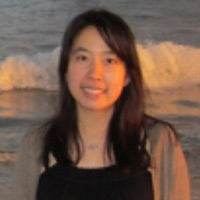 Iris Fu (2012) is working with Prof.Hung Nguyen on elucidating detailed molecular-level mechanisms by which peptide-based conjugates are self-assembled into nanostructures as hydrogel for tissue engineering or encapsulating nanoparticles for gene delivery via molecular dynamics simulations.
Iris Fu (2012) is working with Prof.Hung Nguyen on elucidating detailed molecular-level mechanisms by which peptide-based conjugates are self-assembled into nanostructures as hydrogel for tissue engineering or encapsulating nanoparticles for gene delivery via molecular dynamics simulations.
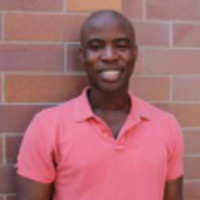 Julius Edson (2013) is working with Prof. Young Jik Kwon on the synthesis and characterization of natural materials that can be used as antimicrobial materials. These materials can also be used as non- viral vectors for applications in gene therapy.
Julius Edson (2013) is working with Prof. Young Jik Kwon on the synthesis and characterization of natural materials that can be used as antimicrobial materials. These materials can also be used as non- viral vectors for applications in gene therapy.
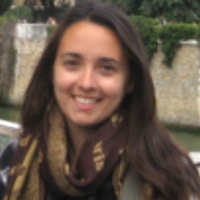 Dominique Ingato (2013) is working on developing safe and efficient non-viral gene delivery vehicles under the guidance of Associate Professor Young Jik Kwon. She focuses on nanotheranostics – the integration of diagnostic and therapeutic function in one system using nanotechnology.
Dominique Ingato (2013) is working on developing safe and efficient non-viral gene delivery vehicles under the guidance of Associate Professor Young Jik Kwon. She focuses on nanotheranostics – the integration of diagnostic and therapeutic function in one system using nanotechnology.
 Nicole Ing (2013) is working with Prof. Allon Hochbaum to study bacterial communities that control the flow of electricity through nanoscale protein- based wires. These bacteria and their conductive appendages are key to understanding the role microbes in geochemical cycles and are promising as active materials in hybrid bio-inorganic renewable energy technologies, from fuel cells to solar power.
Nicole Ing (2013) is working with Prof. Allon Hochbaum to study bacterial communities that control the flow of electricity through nanoscale protein- based wires. These bacteria and their conductive appendages are key to understanding the role microbes in geochemical cycles and are promising as active materials in hybrid bio-inorganic renewable energy technologies, from fuel cells to solar power.
 Adrian Garcia (2014) is working with Prof. Regina Ragan on the control of graphene layers through metal alloys onto interesting substrates. This is an integral component of the next generation of high-energy density super- capacitors, carbon micro- electromechanical devices, and graphene applications in general.
Adrian Garcia (2014) is working with Prof. Regina Ragan on the control of graphene layers through metal alloys onto interesting substrates. This is an integral component of the next generation of high-energy density super- capacitors, carbon micro- electromechanical devices, and graphene applications in general.
 Quynh Vo (2014) is working in the labs of Prof. Hung Nguyen and Prof. Mikael Nilsson. Vo’s research uses molecular dynamics simulations in conjunction with experimental work to clarify the processes involved in solvent extraction systems. This could improve extraction efficiency of radioactive materials from spent nuclear fuel.
Quynh Vo (2014) is working in the labs of Prof. Hung Nguyen and Prof. Mikael Nilsson. Vo’s research uses molecular dynamics simulations in conjunction with experimental work to clarify the processes involved in solvent extraction systems. This could improve extraction efficiency of radioactive materials from spent nuclear fuel.
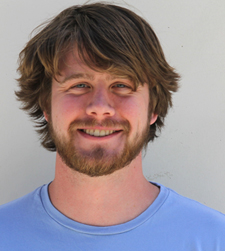 Rylan Kautz (2015), a materials science graduate student, fabricates reflectin films, analyzing their use as biological substrates for cell adhesion and growth. With reflectin's unique material properties, this work could introduce new types of tissue scaffolds and bioelectronic devices. His primary adviser is chemical engineering and materials science professor Alon Gorodetsky, but he also collaborates with Francesco Tombola’s physiology and biophysics lab, and Lisa Flanagan’s neurology lab.
Rylan Kautz (2015), a materials science graduate student, fabricates reflectin films, analyzing their use as biological substrates for cell adhesion and growth. With reflectin's unique material properties, this work could introduce new types of tissue scaffolds and bioelectronic devices. His primary adviser is chemical engineering and materials science professor Alon Gorodetsky, but he also collaborates with Francesco Tombola’s physiology and biophysics lab, and Lisa Flanagan’s neurology lab.
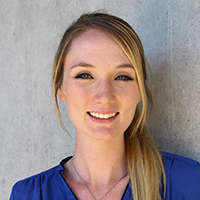 Melissa Thone (2016), a chemical and biochemical engineering major, under Prof. Young Jik Kwon, is researching the use of extracellular vesicles (EVs) as therapeutic and diagnostic (nanotheranostic) platforms for cancer therapy. EVs have properties that could make them better drug delivery vehicles than current systems, which would allow for more effective treatment of a multitude of diseases.
Melissa Thone (2016), a chemical and biochemical engineering major, under Prof. Young Jik Kwon, is researching the use of extracellular vesicles (EVs) as therapeutic and diagnostic (nanotheranostic) platforms for cancer therapy. EVs have properties that could make them better drug delivery vehicles than current systems, which would allow for more effective treatment of a multitude of diseases.
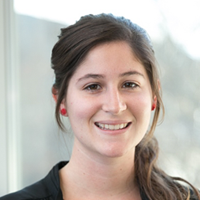 Sarah Maxel (2018) works with adviser Han Li, chemical engineering and materials science assistant professor, to engineer biological cells that can convert renewable resources to useful chemicals like fuels, industrial commodities and pharmaceutical compounds. She uses synthetic biology and protein engineering to construct unnatural metabolic pathways that can help solve a range of metabolic engineering problems.
Sarah Maxel (2018) works with adviser Han Li, chemical engineering and materials science assistant professor, to engineer biological cells that can convert renewable resources to useful chemicals like fuels, industrial commodities and pharmaceutical compounds. She uses synthetic biology and protein engineering to construct unnatural metabolic pathways that can help solve a range of metabolic engineering problems.
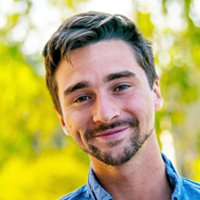 Andrew Rowley (2019) is designing an anti-inflammatory immunotherapy using biomaterials derived from human collagen. He looks at the anti-inflammatory properties of these materials and the kinetics of delivery with the aim of developing therapies for various inflammatory diseases. “When I found out I won the award I was so proud and incredibly honored to know that my research could facilitate this sort of interest and impact,” he said. Rowley is working toward a doctorate in chemical engineering, and his advisers are Professor Szu Wang and Associate Professor Wendy Liu.
Andrew Rowley (2019) is designing an anti-inflammatory immunotherapy using biomaterials derived from human collagen. He looks at the anti-inflammatory properties of these materials and the kinetics of delivery with the aim of developing therapies for various inflammatory diseases. “When I found out I won the award I was so proud and incredibly honored to know that my research could facilitate this sort of interest and impact,” he said. Rowley is working toward a doctorate in chemical engineering, and his advisers are Professor Szu Wang and Associate Professor Wendy Liu.
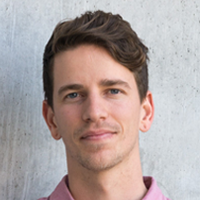 Bryce Wilson (2019) is earning a doctorate in the Department of Chemical and Biomolecular Engineering under the guidance of his advisers Vasan Venugopalan, a professor and department chair; and biomedical engineering professor Elliot Botvinick. Wilson is working on expanding existing optical probe techniques into 3D microenvironments. He aims to develop an optical platform for imaging and perturbing biological environments to explore the connection between physical forces and biological signals.
Bryce Wilson (2019) is earning a doctorate in the Department of Chemical and Biomolecular Engineering under the guidance of his advisers Vasan Venugopalan, a professor and department chair; and biomedical engineering professor Elliot Botvinick. Wilson is working on expanding existing optical probe techniques into 3D microenvironments. He aims to develop an optical platform for imaging and perturbing biological environments to explore the connection between physical forces and biological signals.
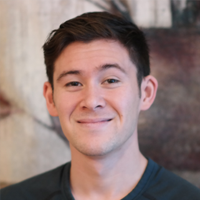 Derek Aspacio (2020), a chemical and biomolecular engineering doctoral student who is advised by Han Li, focuses on restructuring the central carbon metabolism in bacteria to create a tool that can be used to control the production of chemicals. The goal of the research is to develop an alternative to the use of petroleum in classical synthetic chemistry and shift the paradigm in chemical manufacturing from petroleum to sustainable biosynthesis within cells or enzymatic systems. This metabolic approach can be used to maximize biomanufacturing productivity and yield in the production of pharmaceuticals, specialty chemicals and commodity chemicals like fuels.
Derek Aspacio (2020), a chemical and biomolecular engineering doctoral student who is advised by Han Li, focuses on restructuring the central carbon metabolism in bacteria to create a tool that can be used to control the production of chemicals. The goal of the research is to develop an alternative to the use of petroleum in classical synthetic chemistry and shift the paradigm in chemical manufacturing from petroleum to sustainable biosynthesis within cells or enzymatic systems. This metabolic approach can be used to maximize biomanufacturing productivity and yield in the production of pharmaceuticals, specialty chemicals and commodity chemicals like fuels.
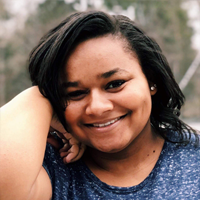 Lexi Lee Crowell (2020), a first-year doctoral student in chemical and biomolecular engineering, designs microfluidic devices for characterizing drug-resistant cancerous cells. She uses electrical impedance spectroscopy to study the dynamics of these cells to determine how factors like heterogeneity, growth and metabolism contribute to their chemoresistance. “I hope that this method will have the potential to monitor when cancerous cells become drug resistant and how to better facilitate therapies once chemoresistance occurs,” said Crowell, who is advised by Tayloria Adams.
Lexi Lee Crowell (2020), a first-year doctoral student in chemical and biomolecular engineering, designs microfluidic devices for characterizing drug-resistant cancerous cells. She uses electrical impedance spectroscopy to study the dynamics of these cells to determine how factors like heterogeneity, growth and metabolism contribute to their chemoresistance. “I hope that this method will have the potential to monitor when cancerous cells become drug resistant and how to better facilitate therapies once chemoresistance occurs,” said Crowell, who is advised by Tayloria Adams.
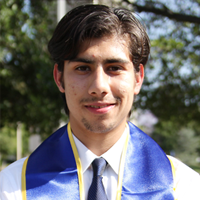 Aaron Ramirez (2020), who is advised by Szu-Wen Wang, is a second-year doctoral student in chemical and biomolecular engineering. His goal is to develop a vaccine platform that can elicit a targeted adaptive immune response toward disease antigens. Specifically, his research involves engineering and constructing a protein nanocapsule that mimics a virus and then loading it with antigens of a specific disease. Antigen-presenting cells will uptake the nanocapsule and induce an adaptive immune response. A previous study using this strategy for cancer vaccines yielded tumor cell disintegration and significant delays in tumor growth, according to Ramirez. “My studies will further explore the use of this virus mimetic strategy by applying it toward infectious diseases such as Q fever and the flu, and other infectious diseases that currently do not have effective vaccines,” he said.
Aaron Ramirez (2020), who is advised by Szu-Wen Wang, is a second-year doctoral student in chemical and biomolecular engineering. His goal is to develop a vaccine platform that can elicit a targeted adaptive immune response toward disease antigens. Specifically, his research involves engineering and constructing a protein nanocapsule that mimics a virus and then loading it with antigens of a specific disease. Antigen-presenting cells will uptake the nanocapsule and induce an adaptive immune response. A previous study using this strategy for cancer vaccines yielded tumor cell disintegration and significant delays in tumor growth, according to Ramirez. “My studies will further explore the use of this virus mimetic strategy by applying it toward infectious diseases such as Q fever and the flu, and other infectious diseases that currently do not have effective vaccines,” he said.
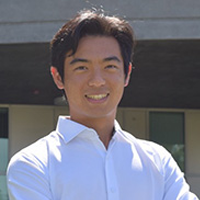 Christopher Pantayatiwong Liu (2022), chemical engineering senior, is focused on fuel cells research, specifically, the wettability of gas diffusion layers (GDLs) for polymer electrolyte fuel cells (PEFCs), which are the fuel cells in vehicles like the Toyota Mirai. For the past three years under the advisement of Iryna Zenyuk, associate professor of chemical and biomolecular engineering, and associate director of the National Fuel Cell Research Center, he has been evaluating different methods of estimating internal water contact angles inside GDLs using a combination of X-ray computed tomography, machine learning, computational software and topological theory.
Christopher Pantayatiwong Liu (2022), chemical engineering senior, is focused on fuel cells research, specifically, the wettability of gas diffusion layers (GDLs) for polymer electrolyte fuel cells (PEFCs), which are the fuel cells in vehicles like the Toyota Mirai. For the past three years under the advisement of Iryna Zenyuk, associate professor of chemical and biomolecular engineering, and associate director of the National Fuel Cell Research Center, he has been evaluating different methods of estimating internal water contact angles inside GDLs using a combination of X-ray computed tomography, machine learning, computational software and topological theory.
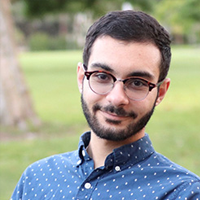 Samer Saleh (2022), chemical and biomolecular engineering graduate student, is advised by Han Li, associate professor of chemical and biomolecular engineering. His research focuses on metabolic engineering and synthetic biology.
Samer Saleh (2022), chemical and biomolecular engineering graduate student, is advised by Han Li, associate professor of chemical and biomolecular engineering. His research focuses on metabolic engineering and synthetic biology.
